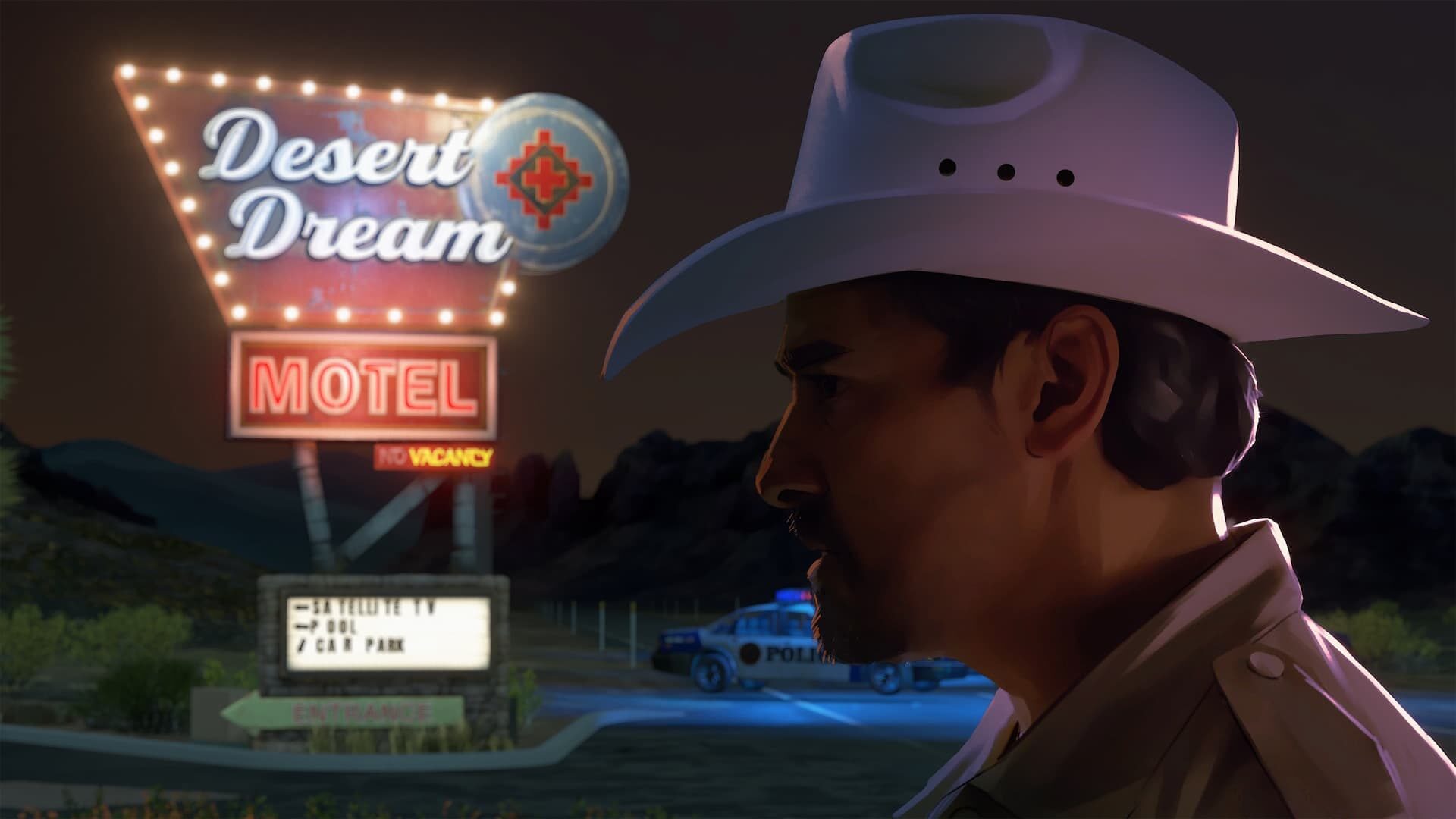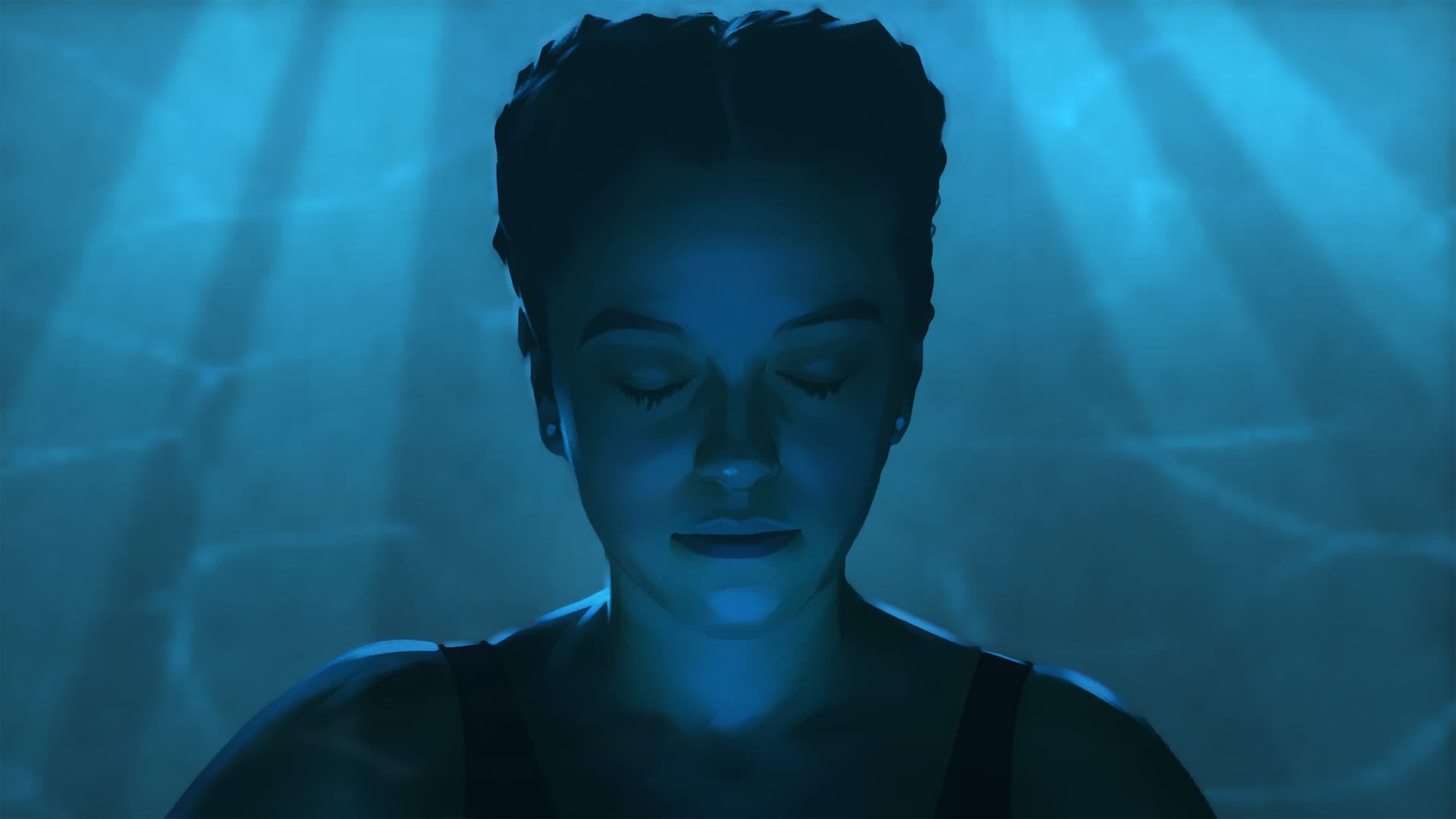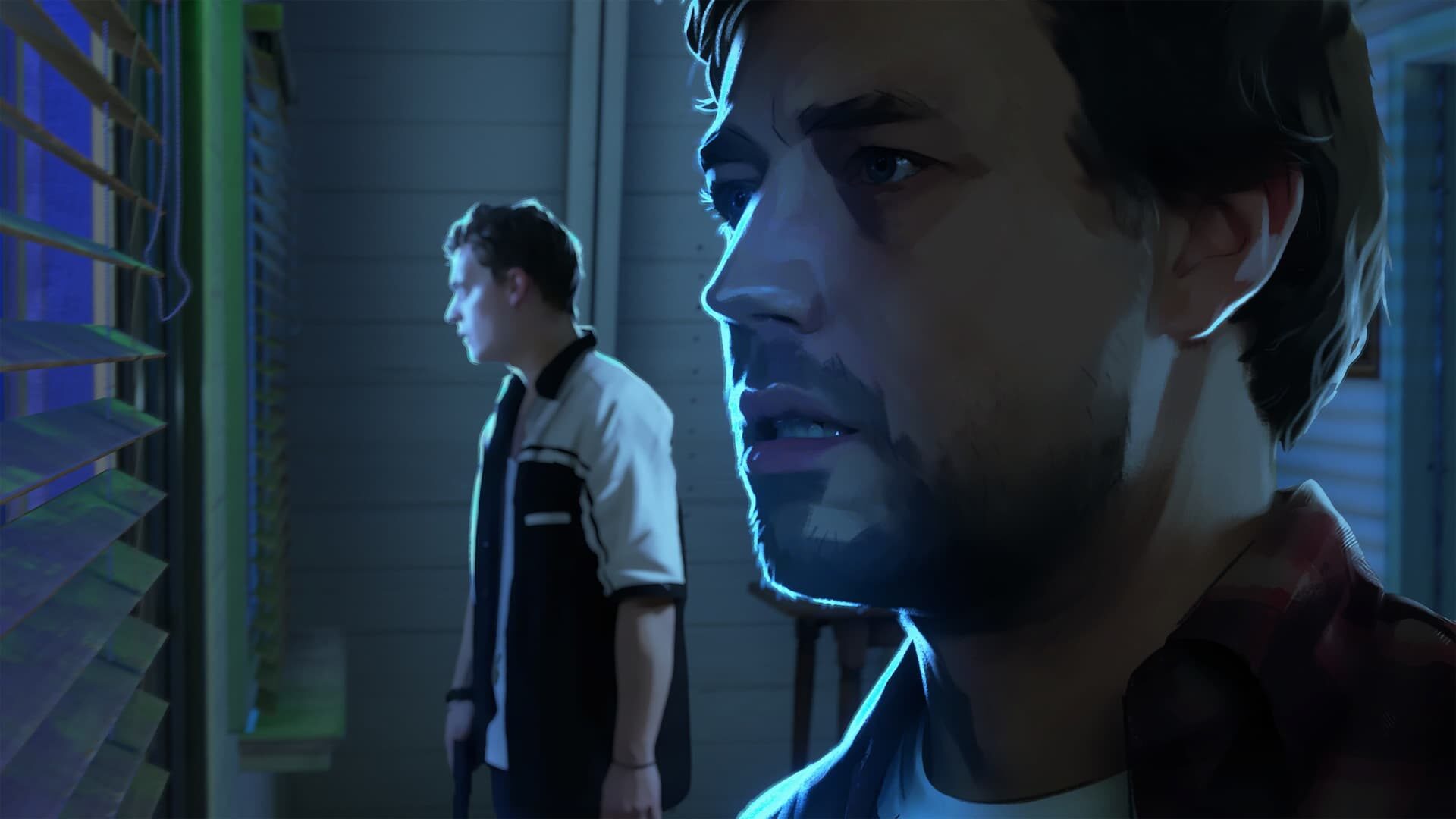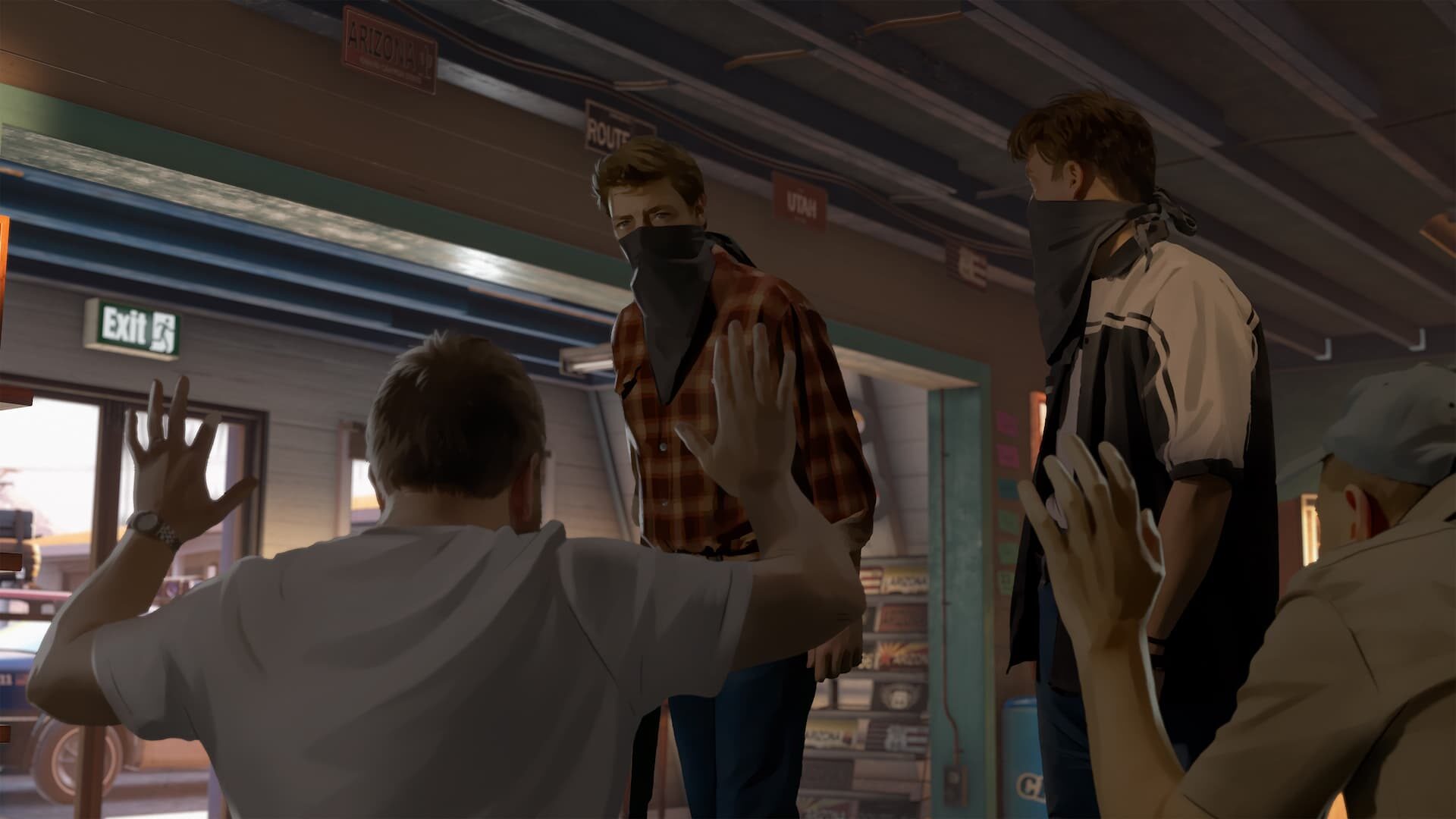When I was a kid, I was mildly obsessed with the Choose Your Own Adventure book series. I was a voracious reader and I loved my Nintendo, so the idea that books could be interactive like a video game blew my tiny mind.
There’s one thing that Choose Your Own Adventure books do better than (most) video games, and it’s how they rely on their young readers’ imaginations to fully bring their stories to life. I don’t care how many pixels or polygons developers use to make their video games—nothing can compare to the vivid detail of a child’s imagination. I would like to think that my imagination is better honed than the average adult’s, but decades of images from movies, TV, and yes, our beloved video games assaulting my brain, in collusion with the natural atrophying of its gray matter, have really done a number on my ability to bring a fictional world to rip-roaring life in my mind’s eye.
As I was playing through INTERIOR/NIGHT’s As Dusk Falls, I kept asking myself why I was finding it so immersive. Traditional video game knowledge would indicate that a painted, motion-comic presentation style and zero gameplay mechanics other than dialogue choices and the occasional quick time event should result in the least immersive experience possible. But As Dusk Falls turned out to be the exact opposite because it forced me to dust off my imagination and actually use it for once.

Centered around a hostage situation in 1998 and its fallout, As Dusk Falls tells the story of two families—the Walkers and the Holts—on a collision course. Vince and Michelle Walker have recently decided to relocate from California to St. Louis. Traveling with them are their six-year-old daughter Zoe and Vince’s estranged father Jim, as well as a heap of physical and emotional baggage. Meanwhile, in their attempt to get out of a gambling debt with some unsavory characters, the Holts—oldest brother Tyler, middle brother Dale, and youngest brother Jay—botch a burglary and end up at the same motel as the Walkers when the cops show up.
As Dusk Falls’ story benefits from seeing both sides of the events that unfold at the Desert Dream Motel. Throughout the first half of the game, which covers the hostage situation and the events preceding it, players will experience the story from the perspective of both Vince and Jay. On the one hand, this dual narrative adds necessary context for Jay and his descent into criminality, but it also weirdly might inform the decisions you make as Vince as you become privy to information that he might not otherwise have. Heavy-handed dialogue notwithstanding, I didn’t feel like I had any trouble making the decisions that I thought Vince and Jay would make, or at least the decisions that I wanted to make as them.
The story slacks in the second half of the game, however, in part because of a forward leap in time that finds Zoe alive and well as a young woman. In a game where the main focus is player choice, it seems like a strange choice to at least relieve some of the tension in making those choices knowing that, no matter what, Zoe will survive the situation. Based on the sprawling narrative tree that’s presented at the end of every chapter, there appear to be a decent number of endings for the other characters, but most of the choices you make in the first half of the game don’t have enough of an impact on the older Zoe to make this jump feel like an effective storytelling technique. In fact, at one point in my playthrough, she had a memory of a scene that was impossible for her to have based on the choices I’d made earlier.

Of course, you won’t be thinking about a lot of this on your first playthrough. You will probably be too distracted by As Dusk Falls’ immediately striking art style, which blends 3D backgrounds and props with 2D paintings of the characters acting out the scene. When I first saw trailers for the game, I was worried that it would be distracting, given how the characters fade in and out of their poses and facial expressions. But the effect is pretty stunning. The paintings are evocatively rendered in broad strokes with just enough line work to lend some definition. What impressed me even more is how the rendering of the lighting on the characters perfectly suits whatever environment they’re in.
While As Dusk Falls might not have gotten the full range of a mo-capped performance, it also doesn’t suffer from the usual issues that narrative-heavy video games do, like the curse of the uncanny valley or stiff animations. Instead, the characters’ emotions are momentarily frozen and the highlights of the actors’ mostly fantastic performances are distilled in tiny moments. It’s in the gaps between these stills where players are forced to engage their imagination, giving players time to revel in the emotions on screen and fill in the blanks. It doesn’t hurt that, between the framing of each shot and the pacing of the editing, As Dusk Falls has some of the most competently directed scenes I’ve ever experienced in a game.
All of this praise for As Dusk Falls is coming from someone who mostly experienced the game alone, in single-player mode, with a controller. According to the developers, As Dusk Falls is intended to be played as a multiplayer game, with up to 8 players allowed to contribute to the decision-making with a Jackbox–style companion app. Unfortunately, as of writing this, the companion app was not available, but I was able to at least test the game with one other player (my non-gamer girlfriend), and I can safely say that As Dusk Falls is an entirely different experience when more people join the party.

Solo, As Dusk Falls is a mostly gripping, occasionally tedious, but consistently immersive interactive film that actively engages your ethics and personal values every time that you need to make a decision. Playing with another person (or, I can only imagine, multiple people, especially in the streamer-friendly broadcast mode) turns As Dusk Falls into something like watching Rocky Horror Picture Show or The Room in a crowded theater, with the participants shouting out lines and cracking jokes, making what happens on screen ancillary to the rest of the experience.
And you know what? It still works. Does it somewhat trivialize the terribly serious things that happen in the game? Yes, if that’s how you want to look at it. Is the pacing slow for a party game? Maybe. I, on the other hand, decide to take the viewpoint that As Dusk Falls’ malleability is one of its strengths. Besides, as much as I hate the idea, I can’t deny that letting streamers involve their audiences with making in-game decisions is a smart marketing move. It’s nice to see INTERIOR/NIGHT taking the long view here and considering their game from all different angles, making it into not only an interactive story with beautiful art and compelling cinematography, but an event.
Another aspect of As Dusk Falls that I appreciated was how easy it makes going back to seeing how different choices would have panned out. When you finish the game, you can choose to explore the story’s narrative tree on the same save file and restart from different points throughout the story. From there, you can decide to overwrite your save, not save at all, or start a whole new save file. These are the kinds of options that I think every narrative game with branching paths should include. It’s like keeping your thumb on the page of a Choose Your Own Adventure book so that you can go back if you don’t like the results of the choices that you made, but in video game form.
Unfortunately, there’s one major problem with INTERIOR/NIGHT’s long view, and it’s in how the game ends. Without giving too much away, I will say that if you are expecting every plot thread to be wrapped up by the end of the game, you will be sadly disappointed. Worst of all, the plot thread that’s left dangling is one that’s introduced within the first 15 minutes of the game. It’s something that’s constantly mentioned and never developed, and the fact that it’s used as a cliffhanger for a potential sequel (or future DLC) is infuriating, especially because there was plenty of room in the game for the writers to fully develop it. In fact, I was so shocked that the game ended the way it did that I spent several minutes trying to figure out how to start the next chapter, convinced that no one in their right mind would end a story the way that INTERIOR/NIGHT decided to end theirs.
I’m not going to say that the way As Dusk Falls ends ruined my experience with the game, but it certainly dampened my excitement enough that I would be suspicious of any sequel or DLC that INTERIOR/NIGHT might release. It doesn’t erase the beautiful work and invigorating stylistic decisions made throughout the rest of the game, but it does make me wonder if maybe the developers weren’t a little too swept up in the excitement of what they were making. It’s bold, I will give them that. But sometimes taking the more traditional route has its advantages.

Images: Xbox Game Studios
|
★★★★☆
As Dusk Falls is exciting, beautiful, and heavy-handed. Its more streamlined approach to narrative gameplay and its less traditional art style create an immersive experience that engages with the player’s imagination. That it can work both as a morally challenging single-player story and a party game for multiple players speaks to the confidence that its developers have. But its second half of the story undercuts some of the tension that its excellent first half builds, and a terrible cliffhanger might leave you feeling betrayed. |
Developer INTERIOR/NIGHT Publisher Xbox Game Studios ESRB M - Mature Release Date 07.19.22 |
| As Dusk Falls is available on Xbox Series X/S, Xbox One, and PC. Primary version played was for Xbox Series X. Product was provided by Xbox Game Studios for the benefit of this coverage. EGM reviews on a scale of one to five stars. | |

Michael Goroff has written and edited for EGM since 2017. You can follow him on Twitter @gogogoroff.